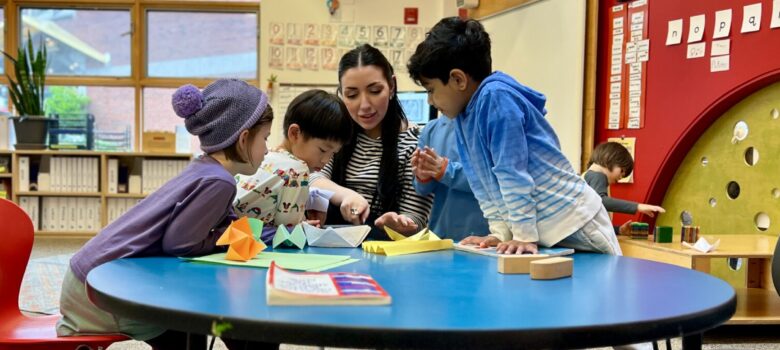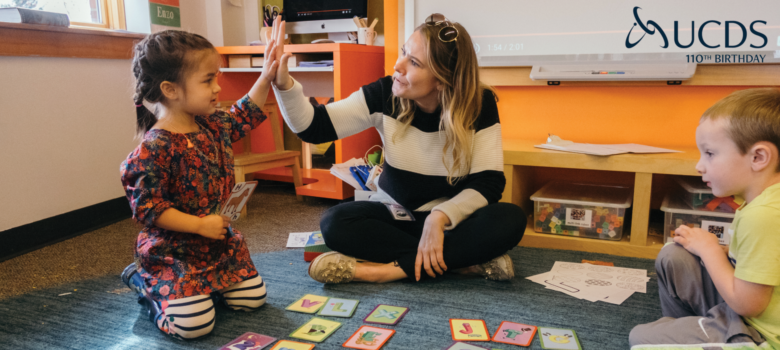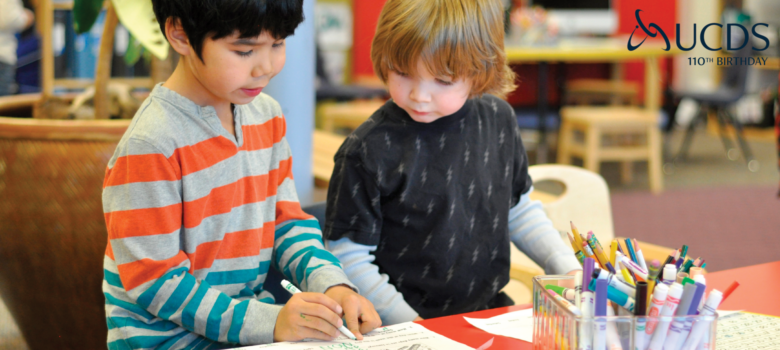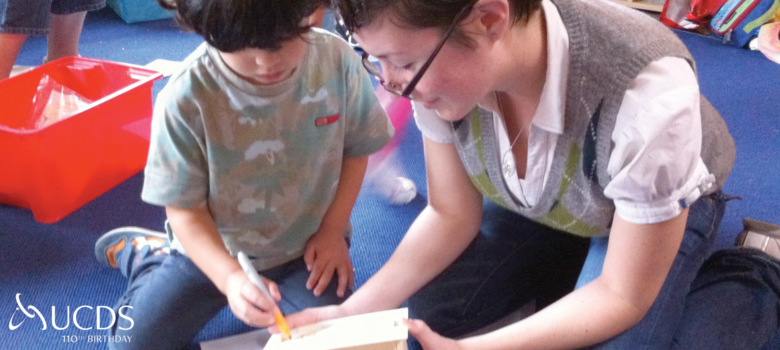Infant Teacher, Marianne Sardelich, explains how The Studio’s new art curriculum has challenged the students cognitively and has allowed them to reach a flow state. Marianne describes how students were given more control over their work and the ways they have been encouraged to collaborate. -Ed.
– – – –
Last year, the Studio decided to formalize the way that we introduce art mediums to our students. Our hope was to balance our philosophy of following students’ interests and wonderings with making sure that students had time and opportunities to develop their skills for working with different types of art materials. We created a list of the mediums that we felt were important to introduce to children: watercolor paint, tempera paint, drawing, clay, found materials, and wire. For six weeks children would focus on one particular art material with projects and experiences that gave children the chance to explore the medium. As a result of having this extended period of time to explore one particular medium, we noticed that the children not only developed their skills for using the different mediums, they began to approach their artwork with a new level of intention and focus.
Our returning students, this year, have continued to build on their understanding of the different mediums. For students who moved from the infant/toddler classroom to the toddler/ preschool classroom, they spent last year doing open explorations of materials and are now refining their skills by learning how to use tools and different techniques. For the children in their second year in the toddler/preschool classroom, they are experimenting with how they can use each medium to represent their thoughts and ideas. This combination of developing and refining skills while also being presented with challenging and creative opportunities to use those skills led to a new energy in the art room. We noticed children staying longer to work on projects, ignoring games in the classroom, and developing their approach over the course of a project. We wondered if the change that we saw in children during art projects had anything to do with the flow state.
The flow state is defined according to positive psychology as a mental state in which a person performing a certain activity is completely absorbed in it and as a result loses a sense of space and time. Milhaly Csikszentmihaly attributes these eight qualities to a flow state: complete concentration, clarity of goals, transformation of time, the experience is intrinsically rewarding, the action is effortless and easy, there is a balance of challenge and skills, action and awareness merge, and a feeling of control over the task. The flow state is caused by decreased activity in the prefrontal cortex which is responsible for higher cognitive function. By turning this area of the brain off, psychologists believe that people experience less self-consciousness and induces the feeling of a loss of time. (Oppland 2016) It is easier for children to enter the flow state because they are developmentally less self-conscious and are generally working from intrinsic goals. (Oppland 2016) At the Studio, the other factors that we think supports our students’ entering a flow state is our philosophy of giving children control over their work and our focus on creating experiences where children are working together towards a particular end. (Oppland 2016) We have always seen evidence of the flow state but in the last few months it has increased.
The traits of the flow state that we watched develop as a result of our new art curriculum were children working on art projects for long periods of time and being totally absorbed in what they were doing. Children would stay in the art room working on their project from the time that teachers announced the project was open until teachers began to clean up around them. They would paint through their paper and ask for more, not notice games that were happening in the classroom, or not respond when teachers asked them questions or commented on their work. In reflecting on why this might be happening, we considered our relatively recent focus on teaching children how to use different mediums by offering them new tools and techniques that challenge their abilities while also building their skills. The art projects that teachers are creating to do this offer children the chance to experience something that they have not encountered before while also working in a medium that they are familiar with. The most recent example of this is teachers covering a table frame with plastic wrap and inviting the children to paint on every possible surface. Children attempted to paint while lying on their backs or sides, they could see other painters as they painted, and when the light went through the plastic wrap it lit their painting in a new way. We believe that these types of projects are creating a balance between challenge and skills that (along with the other factors supporting them) send children into a flow state.
The flow state is important because it has been linked to a person’s level of happiness. We wonder… If our students are learning how to get into a flow state at two years old, how will this impact them as they grow? Will they seek out the flow state? Will it be easier for them to reach a flow state? At the very least, our hope is that by creating experiences that support children in achieving a flow state, we are also building a connection between enjoyment or happiness and creating art.
“Mihaly Csikszentmihalyi: All About Flow & Positive Psychology” by Mike Oppland published on December 16th, 2016. Link to article: https://positivepsychologyprogram.com/mihaly-csikszentmihalyi-father-of-flow/




